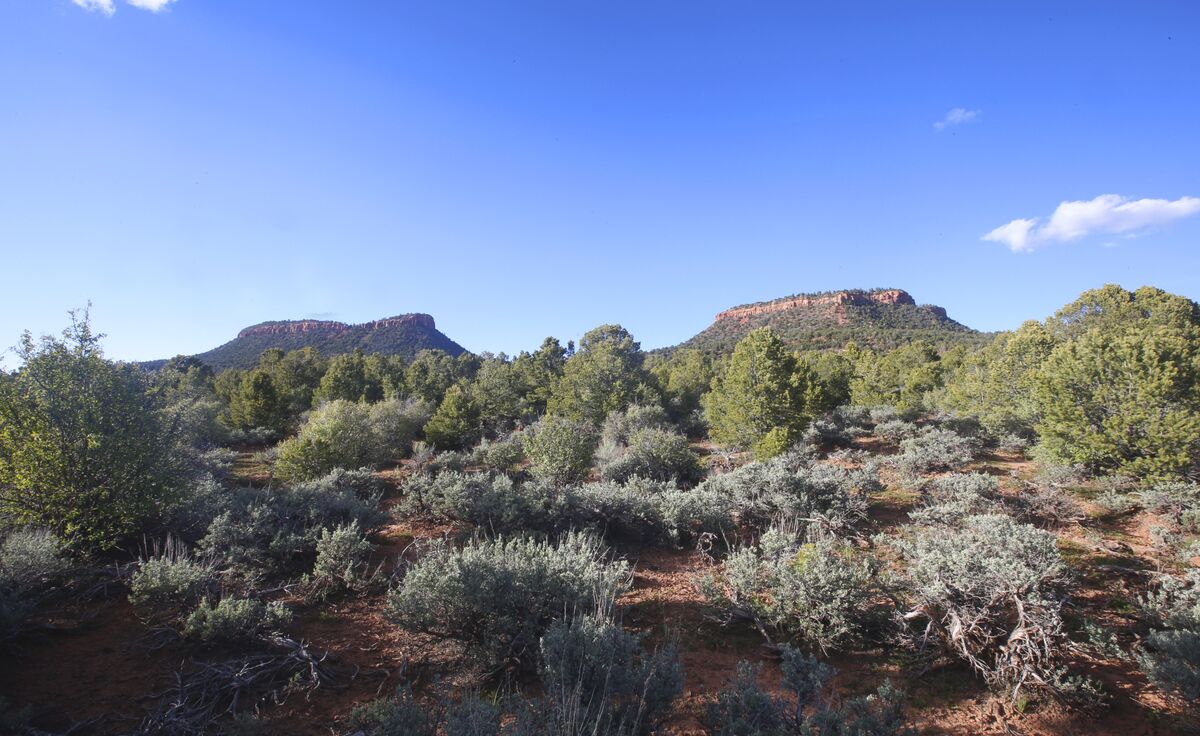
Early on Friday morning, vast swathes of the red-rock high plateau that surrounds federally protected buttes in southern Utah were officially thrown open to miners.
A controversial decision weeks earlier by President Donald Trump had shrunk the size of two national monuments -- known as Bears Ears and Grand Staircase-Escalante -- by hundreds of thousands of acres, enraging environmentalists and American Indian groups who feared a stampede of mine and oil wildcatters would rush in and destroy the area’s sandstone vistas, historic rock carvings and artifacts. And yet, five days in, not only has there been no stampede, but no one has shown up at all.
The Utah Division of Oil, Gas and Mining says it hasn’t received a single permit application for plots in the areas. That may not ease the angst in the activist community any but it does highlight a couple of key elements to the dispute: While the remote region contains several minerals as well as oil and gas, the logistics of moving material in and out are tricky, and the only resource that has the real potential of luring explorers is uranium. But uranium prices are depressed, having plunged more than 80 percent since 2007 and squelched interest in opening new mines.
All of which means that, for now at least, the Trump administration’s scaling back of the monuments feels more like a symbolic political statement than anything else.
“Environmental groups are once again raising fears about this being mined, but practically speaking there’s very little chance of that happening,” Luke Popovich, a spokesman at the National Mining Association, said by telephone.
Late last year, Trump shrank the 1.4-million-acre (567,000-hectare) Bears Ears to about 220,000 acres and the 1.9-million-acre Grand Staircase-Escalante to about 1 million acres as part of his push to roll back regulation and encourage development. The aim for lifting the monument boundaries was to create jobs and prospecting opportunities in the region for companies looking to exploit oil, natural gas, coal and mineral deposits.
“There’s been a lot of misperception that once the monument got reduced that people would flock to mining, and that’s just not the case,” Hollie Brown, a Utah Division of Oil, Gas and Mining spokeswoman, said by phone. “The geology around there is not good for oil and gas and mining. Where the Grand Staircase is located, just the remoteness, it would take a lot to mine coal and transport it.”
In addition, the rollback of protected land doesn’t make the process any easier to obtain permits, Michael Richardson, the Bureau of Land Management Utah’s communications director, said in an email. Richardson said the public will be able to locate mining claims on lands outside the monument boundaries, but that further development of the claims requires further process with the BLM and/or the U.
The Bears Ears site overlapped with potential reserves of oil, gas and coal, according to an analysis of U. government data by Greenpeace. There also are uranium deposits nearby, but prices have been depressed since the 2011 Fukushima nuclear-reactor disaster in Japan.


0 comments:
Post a Comment